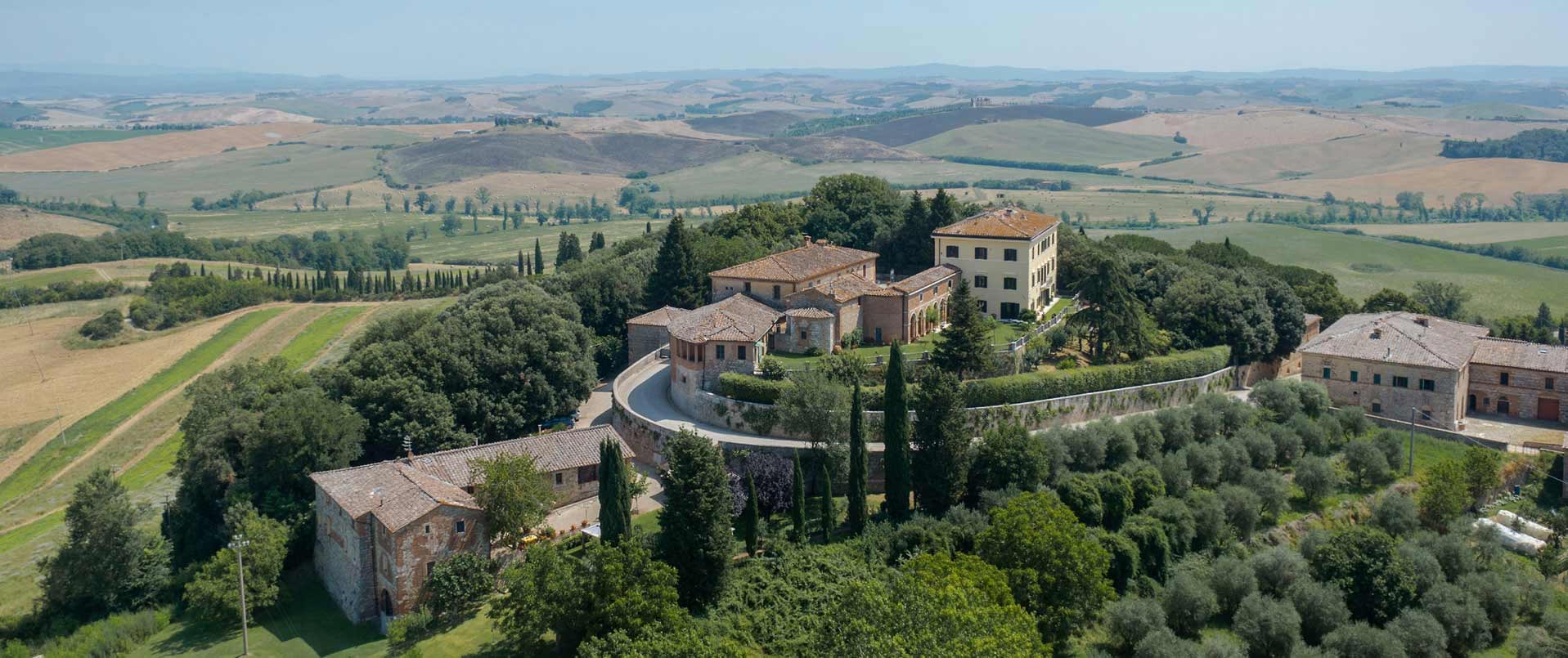
The Borghese Castle of Pratica di Mare, owned by the Borghese family since 1617, stands on the ruins of the ancient city of Lavinium, which was founded by Aeneas following his landing on the coast. Over the course of time, the Castle became the central point for the local civilisation and the surrounding lands. It has retained its original architectural layout, still evident today with its pentagonal silhouette, as preserved by Antonio San Gallo the Younger. The outbuildings of the village and its defensive walls underwent various restoration interventions over the centuries in order to ensure its effective protection. Its construction, chosen on a natural tuff hillock, made it an excellent strategic point for controlling and managing the neighbouring territory. The Borgo annexed to the Castle, inhabited by the farmers of the Pratica di Mare Estate, was the hub of numerous artisan activities, such as the processing of silk, leather and local clay. There was naturally no shortage of bread-making, which was produced in the ancient bakery, as well as dairy products and vegetables. Alongside the Church of St. Peter the Apostle, situated at the heart of the hamlet and serving as a place of congregation for its residents, these endeavours not only sustained the vitality of the Castle throughout the ages but have also left an indelible imprint on the history of Pratica di Mare.
The history of Castello Borghese
The name is of great antiquity and first appeared in its original form of ‘Patras’ in an imperial donation by Emperor Constantine to the Basilica of the Holy Cross. The Liber Pontificalis declared: “Constantine Augustus built a basilica in the Lateran Palace, which is called Jerusalem, and in that place, he established a residence… near the city of Laurentum, the possession of Patras”.
Thus began a long ecclesiastical predominance over the entire territory of Pratica that would lead to the establishment of a fully-fledged ‘civitas’ or city as early as the 9th century, and indeed there was already mention of a ‘Civitas Patrica’ (Patrica City) granted to the Monastery of San Paolo under the pontificate of Marino I in 882-884. This Monastery was then confirmed and established as having a church dedicated to St. Lawrence by Pope Gregory VII (1073-1085), which was reaffirmed in 1203 by Pope Innocent and subsequently remained in the hands of the monks during the 13th century.
In the 14th and 15th centuries, the Castle was owned by several prestigious dynasties, including the Capranica and Massimo families, and during this period the name was changed from Patrica to ‘Pratica’.
In 1617, the Borghese family acquired the estate, and they continue to possess it to this day. Upon taking ownership of the property, they promptly decided to enhance its defenses, which included equipping the Castle Tower with various weaponry, such as ‘two bronze falconettes, 50 arquebuses, 25 iron pikes, 6 muskets, and 4 culverins, along with their respective ammunition’.
The towering structure was bombed by the Germans during the Second World War, resulting in its collapse and the destruction of a significant portion of the Palazzo. This section was never reconstructed. In the modern history of Pratica di Mare, the legacy is closely associated with Prince Camillo Borghese. During the early 1900s, he embarked on a mission to revitalise the hamlet, reintroducing inhabitants and reinvigorating the estate’s agricultural endeavours. Following the Prince’s passing, his second wife, Maria Monroy di Belmonte, assumed the estate’s management. She spearheaded the reconstruction of the Borgo and a section of the Castle that had suffered damage during the German invasion. Maria Monroy also boosted the village’s economy by establishing the Antica Fabrica di Ceramiche (Ancient Ceramics Factory), renowned for its exceptional quality and highly regarded by international high society.
Prince Pierfrancesco, the sole heir of Princess Monroy, continued her work following her death in 1964. An icon of the Dolce Vita era, he transformed the Borgo into a vibrant hub, drawing the attention of luminaries from the worlds of cinema, art, and culture. Figures such as Sergio Leone, Pietro Cascella, Marcello Muccini, Antonio Vangelli, to name but a few, were frequent visitors. In 2008, Prince Pierfrancesco and his wife Grazia initiated a comprehensive restoration project for the entire architectural complex. Their efforts commenced in the heart of the Borgo with the restoration of the Church of St. Peter the Apostle and later extended to the Castle. The extraordinary future of Pratica di Mare continues to evolve and unfold.
Facilities and services: an enchanting and timeless location on the ruins of ancient lavinium.
Visits of Castello Borghese Pratica di Mare: by appointment only.
 Film sets
Film sets
 Gardens
Gardens
 Private events
Private events
 Residences
Residences
 Visits
Visits
 Cultural tourism
Cultural tourism  Gardens
Gardens  Historic Homes open to visitors
Historic Homes open to visitors